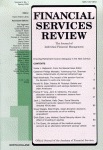Tie-in arrangements of life insurance and savings
An economic rationale
DOI:
https://doi.org/10.1016/1057-0810(91)90035-WAbstract
Cash-value insurance contracts can be viewed as tying life insurance with savings. The main purpose of this article is to provide an economic rationale for this widespread practice. It is assumed that there is an asymmetry of information between the insurers and insureds, where the latter know better their probability of death, and hence adverse selectin may cause a market failure. To overcome this problem, a multiperiod (for exposition purposes a three-period model is used) contract and a single-period contract are offered. The multiperiod contract specifies a savings element which may be received by the insured at his or her discretion. If the insured lives at the end of the second period. It is shown that by the right choice of the savings element and the return on this element, the insurers can induce insureds to self-select. Insureds with lower probabilities of death will choose the multiperiod contract whereas insureds with higher mortality will choose successive single-period contracts. It is therefore shown that tie-in arrangements of savings and insurance may help the problem of adverse selection and hence an economic rationale is provided for their existence. (reprinted with permission).
Published
How to Cite
Issue
Section
License
Copyright (c) 1991 Academy of Financial Services

This work is licensed under a Creative Commons Attribution-NonCommercial 4.0 International License.
Author(s) retain copyright and grant the Journal right of first publication with the work simultaneously licensed under a Creative Commons Attribution-NonCommercial 4.0 International License that allows to share the work with an acknowledgment of the work's authorship and initial publication in this Journal.
This license allows the author to remix, tweak, and build upon the original work non-commercially. The new work(s) must be non-commercial and acknowledge the original work.


